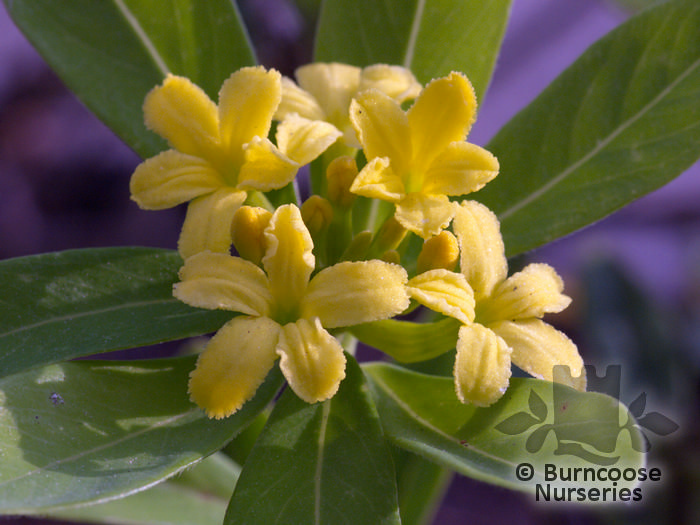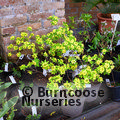DAPHNE gemmata

<








>
DAPHNE gemmata
Bushy habit and clusters of yellow flowers in late spring to summer followed by red fruits
Full Plant Details - Sun/Soil & other attributes
-
Floweringlocal_floristJanlocal_floristFeblocal_floristMarlocal_floristAprlocal_floristMaylocal_floristJunlocal_floristJullocal_floristAuglocal_floristSeplocal_floristOctlocal_floristNovlocal_floristDec
-
 Good to know
Syn. Wikstroemia gemmata. Wildlife plant - bees
Good to know
Syn. Wikstroemia gemmata. Wildlife plant - bees -
 Pests & Diseases
None
Pests & Diseases
None -
 Place of origin
China
Place of origin
China -
Deciduousleaves to 8cm (3in) long
-
 Yellow
Yellow
-
Trumpet
-
BorderSuitable for a shrub border
-
Cottage garden
-
Suitable for small gardens
-
Town garden
-
Fully hardyBorderline
-
 Entire
Entire
-
 Ovate
Ovate
-
 Height
75cm (30in)
Height
75cm (30in) -
 Spread
75cm (30in)
Spread
75cm (30in) -
Medium shrubTypically grow to around 4-6 feet in heightCompact shrub. Produces flowers in terminal clusters followed by red beries
-
 Pruning group 1
Suitable for: Deciduous and evergreen trees, and some deciduous shrubs.
Pruning group 1
Suitable for: Deciduous and evergreen trees, and some deciduous shrubs.
Pruning: Minimal pruning required. Prune wayward or crossing branches to maintain a healthy framework.
When: When dormant in the late winter/early spring. Some in the summer/autumn to prevent bleeding of sap.
-
 Pruning group 5
Suitable for: Evergreen shrubs that require minimal pruning.
Pruning group 5
Suitable for: Evergreen shrubs that require minimal pruning.
Action: Trim or lightly cut back shoots that spoil symmetry. Deadhead regularly.
When: Annually after flowering.
-
 Hardy - average winter
Hardy through most of the UK apart from inland valleys, at altitude and central/northerly locations. May suffer foliage damage and stem dieback in harsh winters in cold gardens. Plant can withstand temperatures down to -10°C (14°F)Borderline
Hardy - average winter
Hardy through most of the UK apart from inland valleys, at altitude and central/northerly locations. May suffer foliage damage and stem dieback in harsh winters in cold gardens. Plant can withstand temperatures down to -10°C (14°F)Borderline -
Scented flowers
-
Spring Seasonal Interest
-
Fertile well drained soilModerately fertile
-
 Full sun
Full sun
-
 Partial shade
Partial shade
-
 skin irritant
People and pets, i.e. cats, dogs, rabbits, rodents
skin irritant
People and pets, i.e. cats, dogs, rabbits, rodents -
 toxic if eaten
People and pets, i.e. cats, dogs, rabbits, rodents
toxic if eaten
People and pets, i.e. cats, dogs, rabbits, rodents -
 Bee friendly
Bee friendly
-
Rabbit Resistant
-
Mature Size75cm (30in)


75cm (30in)
View Planting Tips and Care Advice
Cold weather damage to evergreen plants
Daphne - Care Guide








